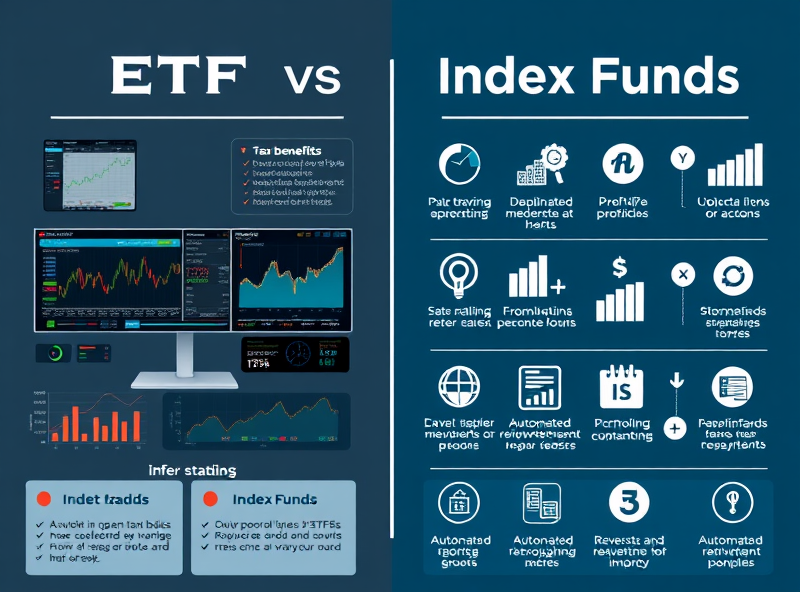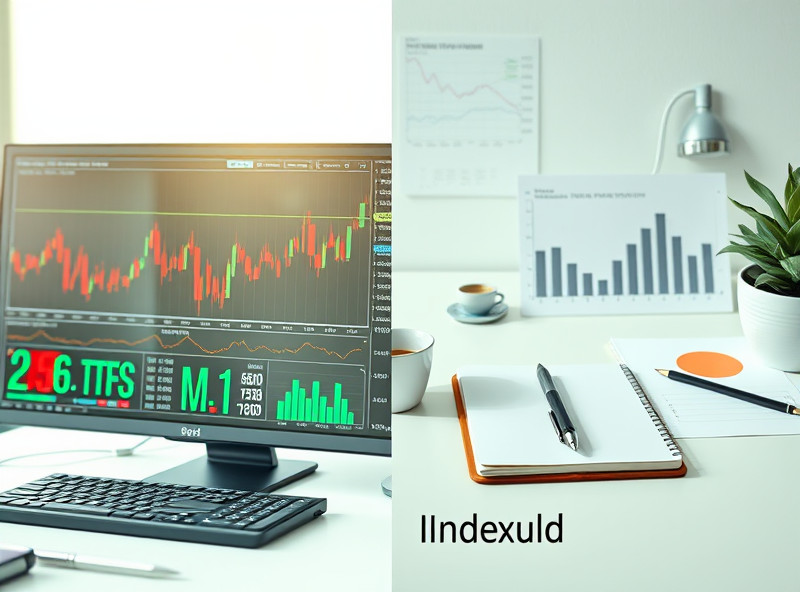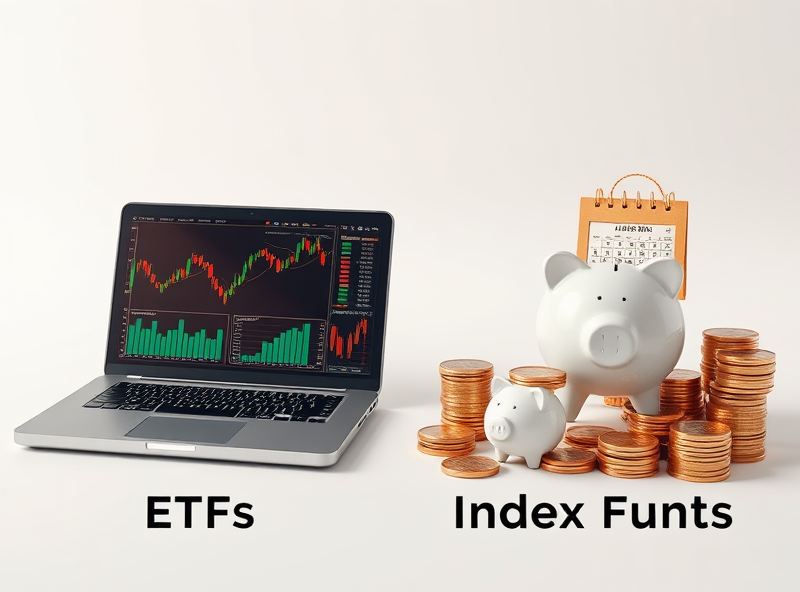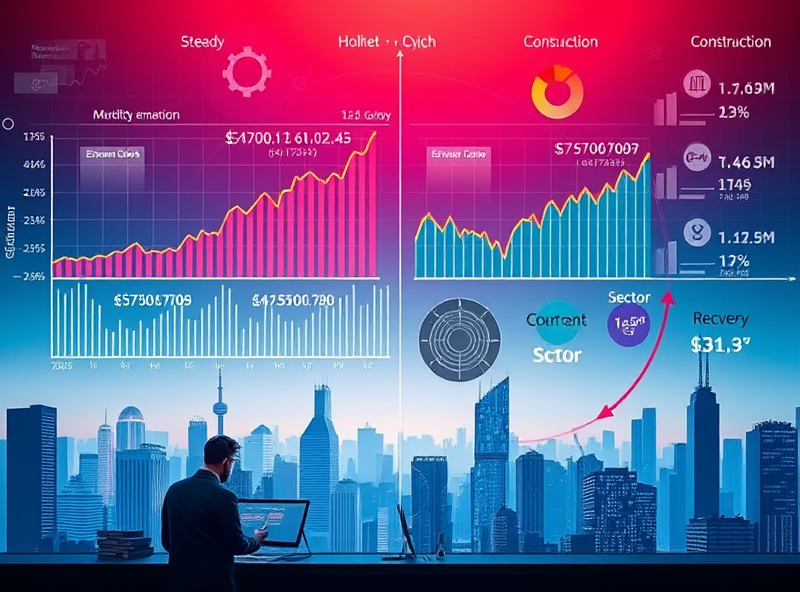
ETFs vs Index Funds: A Guide for Long-Term Investors
Understanding the Core Differences Between ETFs and Index Funds

When it comes to long-term investing, both ETFs (Exchange-Traded Funds) and Index Funds are popular choices, but they serve slightly different purposes. Understanding their core differences can help you make smarter investment decisions.
ETFs are traded on stock exchanges, just like individual stocks. This means you can buy or sell them throughout the trading day at market prices. They are highly flexible and often come with lower expense ratios, making them an attractive option for cost-conscious investors. However, you may incur trading fees every time you buy or sell an ETF, which can add up if you trade frequently.
On the other hand, Index Funds are mutual funds designed to track a specific market index, such as the S&P 500. Unlike ETFs, they are priced once a day after the market closes. Index Funds are ideal for investors who prefer a ‘set-it-and-forget-it’ approach, as they often come with automatic investment options and no trading fees. However, their expense ratios can sometimes be slightly higher than those of ETFs.
In summary, ETFs offer flexibility and lower costs for active traders, while Index Funds provide simplicity and ease for hands-off investors. Choosing between the two depends on your investment style, goals, and how actively you want to manage your portfolio. Both are excellent tools for building long-term wealth, so understanding these differences can help you align your investments with your financial objectives.
Top Advantages of ETFs and Index Funds for Long-Term Investing

When it comes to long-term investing, both ETFs (Exchange-Traded Funds) and Index Funds are excellent options for building wealth over time. These investment vehicles offer unique advantages that cater to different investor needs, making them highly appealing for those aiming to grow their savings steadily and securely. Let’s explore some of the top benefits of these two options:
1. **Diversification**: Both ETFs and Index Funds provide instant diversification by investing in a wide range of assets. This reduces the risk associated with putting all your money into a single stock or sector. For example, an S&P 500 Index Fund or ETF gives you exposure to 500 of the largest companies in the U.S., spreading out your risk significantly.
2. **Low Costs**: One of the biggest advantages of both ETFs and Index Funds is their low expense ratios. Since these funds are passively managed, they cost much less than actively managed funds, which can eat into your returns over time. This makes them a cost-effective choice for long-term investors.
3. **Ease of Access**: ETFs are traded on stock exchanges, just like individual stocks, which means you can buy and sell them throughout the trading day. Index Funds, on the other hand, are purchased directly from fund providers at the end of the trading day. Both options are relatively simple to access and manage, making them beginner-friendly.
4. **Tax Efficiency**: ETFs, in particular, are known for their tax efficiency. Due to their unique structure, they allow investors to minimize capital gains taxes compared to mutual funds. Index Funds, while slightly less tax-efficient than ETFs, still offer significant tax advantages over actively managed funds.
5. **Long-Term Growth Potential**: Both ETFs and Index Funds are designed to track the performance of a specific index, such as the S&P 500 or the Nasdaq 100. Historically, these indices have shown strong growth over the long term, making them ideal for investors with a time horizon of 10 years or more.
By understanding these advantages, you can make an informed decision about which option aligns best with your financial goals. Whether you choose ETFs, Index Funds, or a combination of both, these tools can help you achieve steady growth and financial security over time.
How to Choose: Factors to Consider Before Investing

When deciding between ETFs (Exchange-Traded Funds) and Index Funds, it’s important to consider several key factors that align with your financial goals and investment style. Here are some aspects to think about:
1. **Cost Efficiency**: ETFs often have lower expense ratios compared to mutual funds, including index funds. However, keep in mind that ETFs may incur trading fees every time you buy or sell shares, whereas index funds typically do not. If you plan to invest regularly in small amounts, index funds might be more cost-effective.
2. **Flexibility and Liquidity**: ETFs trade like stocks on an exchange, meaning you can buy or sell them throughout the trading day at market prices. Index funds, on the other hand, are only traded at the end of the trading day at the fund’s net asset value (NAV). If you value real-time trading flexibility, ETFs may be a better fit.
3. **Minimum Investment Requirements**: Many index funds have minimum investment thresholds, which can range from a few hundred to several thousand dollars. ETFs, however, can be purchased in single shares, making them more accessible for investors with limited capital.
4. **Tax Efficiency**: ETFs are generally more tax-efficient than index funds due to their unique structure. ETFs use an ‘in-kind’ creation and redemption process, which minimizes capital gains distributions. This can be an important consideration for investors in higher tax brackets.
5. **Long-Term vs. Short-Term Goals**: If you’re a long-term investor who prefers a hands-off approach, index funds might be more suitable due to their simplicity and lack of trading fees. On the other hand, if you enjoy actively managing your portfolio or want to take advantage of intraday price movements, ETFs could be a better option.
Ultimately, the choice between ETFs and index funds depends on your individual needs, investment strategy, and financial situation. Take the time to evaluate these factors carefully to make an informed decision that aligns with your goals.
Best ETF and Index Fund Examples to Boost Your Portfolio

When it comes to building a robust investment portfolio, choosing the right ETFs (Exchange-Traded Funds) and Index Funds can make a significant difference. Both options are excellent for long-term investors, but they cater to slightly different needs. Here are some of the best examples to consider for your portfolio:
1. **SPDR S&P 500 ETF (SPY)**: This ETF tracks the S&P 500 Index, offering exposure to 500 of the largest companies in the U.S. It’s a great choice for investors looking for broad market exposure with high liquidity.
2. **Vanguard Total Stock Market Index Fund (VTSAX)**: If you prefer an index fund, VTSAX is a fantastic option. It provides exposure to the entire U.S. stock market, including small, mid, and large-cap stocks, making it a well-diversified choice.
3. **iShares MSCI Emerging Markets ETF (EEM)**: For those looking to diversify internationally, this ETF focuses on emerging markets, offering exposure to high-growth economies like China, India, and Brazil.
4. **Fidelity ZERO Large Cap Index Fund (FNILX)**: This index fund is unique because it has no expense ratio, making it a cost-effective option for long-term investors who want exposure to large-cap U.S. stocks.
5. **Invesco QQQ ETF (QQQ)**: If you’re interested in technology and innovation, QQQ tracks the Nasdaq-100 Index, which includes companies like Apple, Microsoft, and Amazon.
By combining ETFs and Index Funds like these, you can create a well-balanced portfolio that aligns with your financial goals and risk tolerance. Remember, the key to successful investing is consistency and a long-term perspective. Always consider your investment objectives and consult with a financial advisor if needed.




